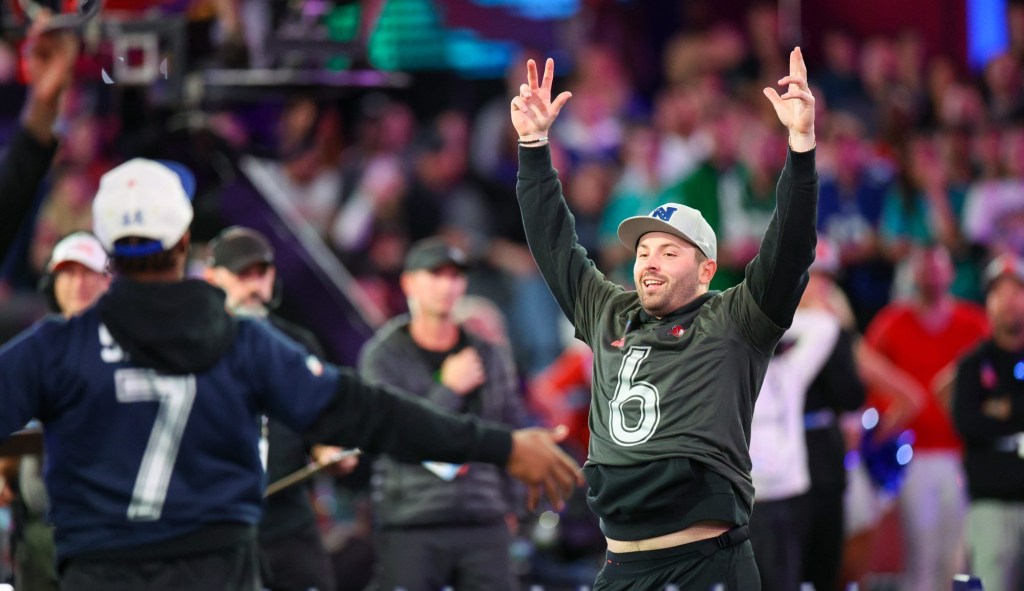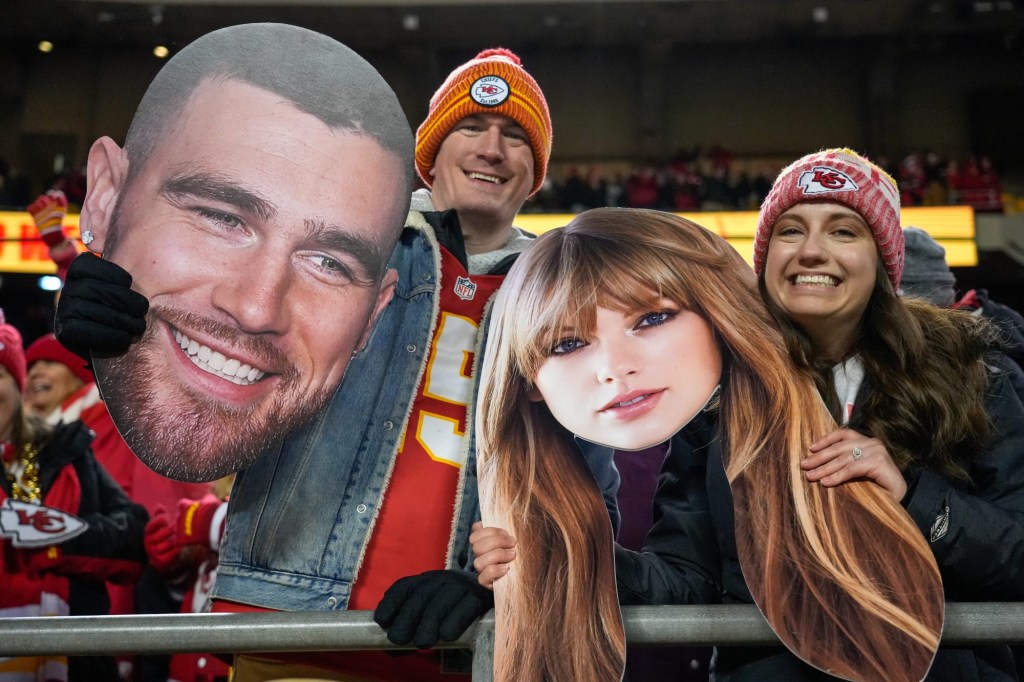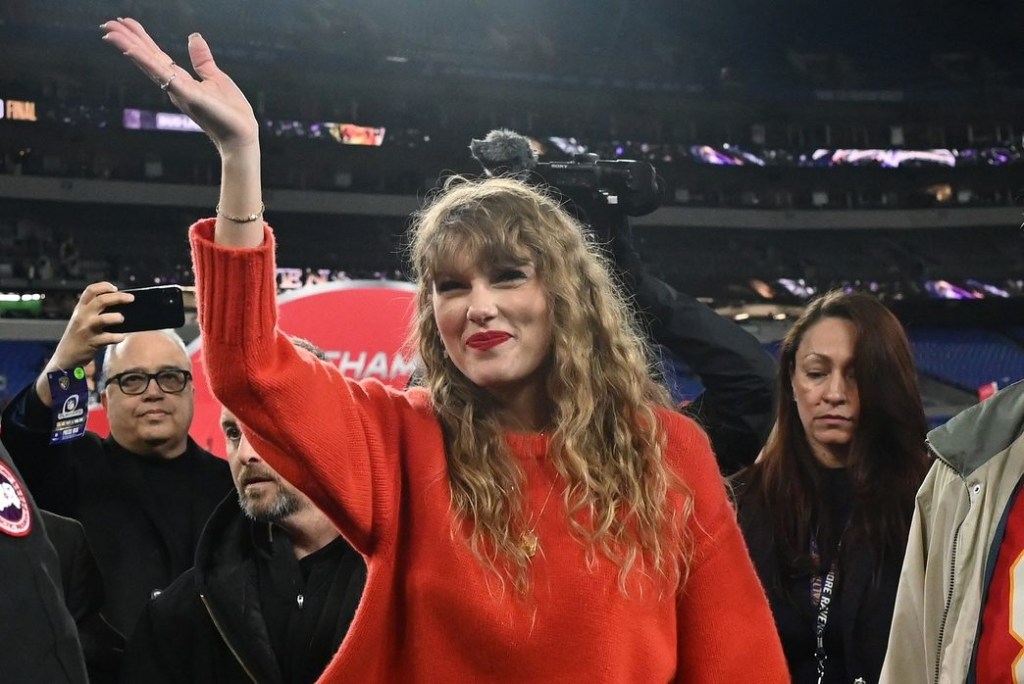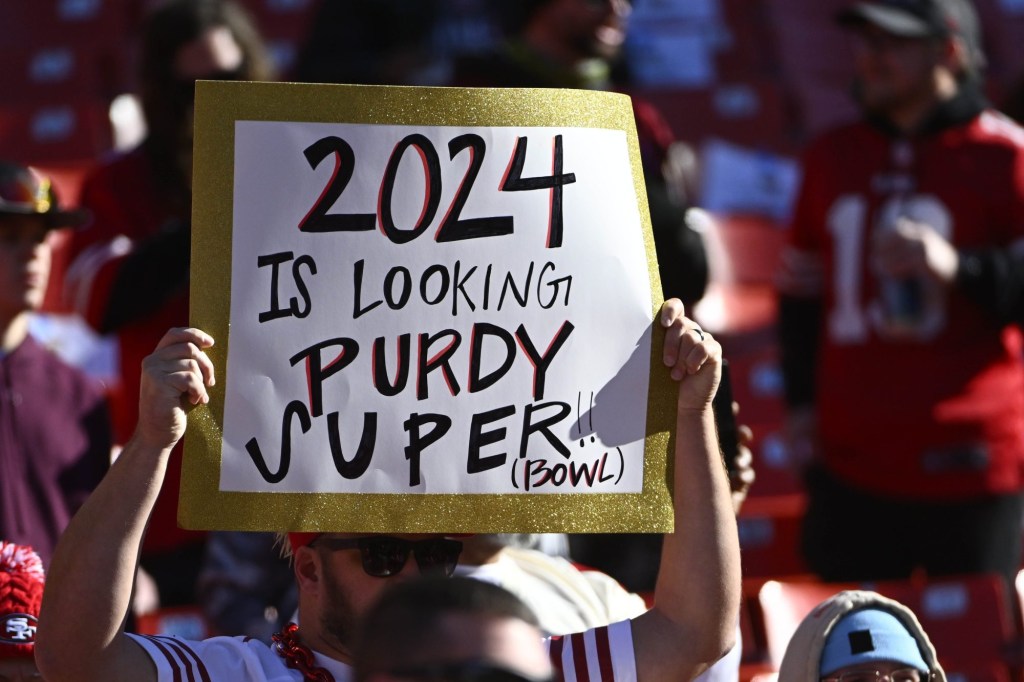The NFL on most fronts is a runaway train of popularity, particularly in the past year, posting one television audience increase after another, elevating its attendance numbers, and now enjoying the further boost of Taylor Swift’s megawatt stardom.
There has been a rather notable exception to that lofty standing: the NFL’s all-star game.
Previously known as the Pro Bowl, the event languished for years as a traditional tackle football game with little in the way of genuine tackling, and one of its defining features was which stars skipped the event as opposed to who actually played. Fans registered their displeasure with steadily lower ratings, and the 2022 game’s average draw of 6.7 million was just 40% of the NFL’s normal regular-season draw that season. Even commissioner Roger Goodell voiced that broad feeling of unhappiness, bluntly saying in May ’22, “The game doesn’t work. We need to find another way to celebrate the players.”
In response, the league soon moved in radical fashion and dramatically remade the Pro Bowl into the Pro Bowl Games, a multiday event featuring skills competitions and highlighted by a flag football game featuring NFL all-stars. That shift did not immediately produce a larger audience, with the debut Pro Bowl Games in 2023 sinking another 7.5%, to an average of 6.2 million.
Undeterred, the league is back with the second iteration of the Pro Bowl Games, with Sunday’s seven-on-seven flag football game capping off an event that includes several format tweaks for 2024, perhaps most notably the introduction of a tug-of-war competition that gives a new spotlight to often-overlooked linemen and somewhat recalls the made-for-TV Superstars series that peaked in the 1970s.
So what exactly is the purpose of the Pro Bowl Games?
Like many other major league all-star events, the Pro Bowl Games carry a series of NFL business objectives that go far beyond simply drawing a mass television audience. Among them:
- Providing an additional marketing platform for corporate sponsors
- Advancing other league grassroots and participatory programs, such as flag football, which has now risen to Olympic status
- Reaching younger fans, particularly through social media
- Showcasing the league’s top talent, which can later manifest in other revenue lines, such as merchandise sales
- Gathering players in a much more relaxed setting than the typical, high-pressure cadence of the NFL schedule
“This is an amazing opportunity [for players] to have that level of camaraderie and brotherhood after a long-fought season and be there with their families,” Matt Shapiro, NFL vice president of event strategy and integration, tells Front Office Sports. “There are a lot of social moments, but also a lot of competitive moments. When fans tune in, there’s absolute fun being had, but there’s no doubt that a competitive streak also comes out.”
Not Alone
The NFL’s continued reshaping of the Pro Bowl Games is thematically similar to what several other major leagues are doing to reinvigorate their all-star games. The NBA is returning to a traditional, conference-based game format. The NHL, which just concluded its Feb. 1–3 All-Star weekend, reverted to a player-led draft system previously used in 2011–12 and ’15. And MLB now stages its annual draft in conjunction with its all-star festivities, and the league has bulked up the production level of that event.
Those shifts form a response to many of the same issues the NFL has faced in recent years, including declining ratings, player participation issues, and a struggle to find a balance between injury prevention and on-field competitiveness.
“We’re sending mixed signals,” NBA commissioner Adam Silver told ESPN. “And if we want guys to treat this like a real game … we have to treat it that way.”
The NFL, not surprisingly, is paying close attention to those endeavors, even as the league still is in a rather different situation, holding the Pro Bowl Games at the tail end of its season, whereas the other games exist as midseason showcases.
“There’s certainly been observation of what everybody is doing, connections across the board,” Shapiro says. “It’s about observing best practices, trying to learn. There are similarities, for sure, but also significant differences in what the play, the competition looks like across all these leagues. So each league is definitely trying to work through what’s best for their players and their fans.”
Youth Movement
It’s not a Nickelodeon alt-cast or a Toy Story–themed production, but the youth audience is squarely in the crosshairs of the NFL and media partner ESPN for the Pro Bowl Games.
Similar to last year, Sunday’s broadcast will feature a simulcast on Disney XD in addition to the core presentation on sister networks ESPN, ESPN+, and ABC. Broadcast access will extend far beyond regular-season and playoff norms, and quarterbacks will wear microphones. So, too, will AFC and NFC coaches Peyton and Eli Manning. Many of the individual skills competitions and top moments from the flag football competition will also be cut up extensively for social media distribution.
“This event is really built for social,” Shapiro says. “It’s seeing players’ personalities, helmets off, getting to a couple of different practices [in addition to the competitions], the great content of players coming together. So that is a big piece of this whole thing.”
Such tactics paid off last year as the initial Pro Bowl Games skills competition last year, airing on a Thursday night, drew double-digit percentage audience increases in the overall ages 18–34 group, and males within that demographic, compared to a Pro Bowl skills event held in 2022. And ESPN is looking for an even bigger boost this year.
Initial figures for this year give the network some additional hope. Thursday’s Pro Bowl Games skills competition drew an average audience of 1.14 million, up 8% and the best figure for that part of the event since 2018. More dramatically, the broadcast grew 40% year-over-year among the ages 2-17 demographic, and 34% in the ages 12-17 group.
“This is an event that allows us to build deeper relationships with NFL fans, particularly the younger ones,” Tim Reed, ESPN vice president of programming, tells FOS. “Between the format of this event and the type of access we can provide, it’s definitely not the type of production you see in an ordinary NFL week. So we certainly see this as something that provides a unique set of benefits.”







